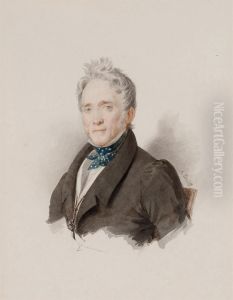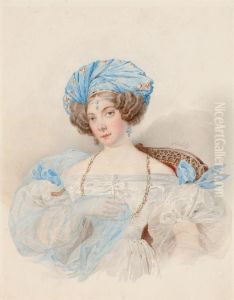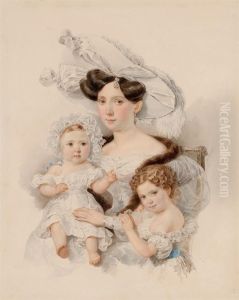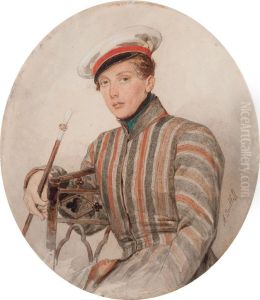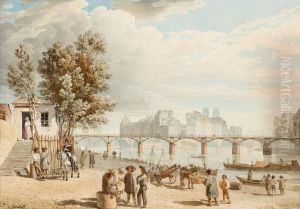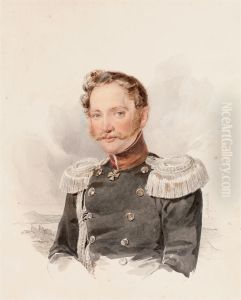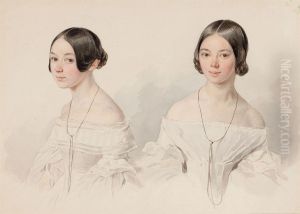Alexander Briullov Paintings
Alexander Pavlovich Briullov, born on December 12, 1798, in Saint Petersburg, Russia, was a prominent Russian artist, renowned for his mastery in architecture and painting, particularly within the Romanticism movement. Hailing from a family deeply entrenched in the arts—his father was a sculptor and his brother, Karl Briullov, was one of the most celebrated Russian painters of his time—Alexander's artistic path was both nurtured and inevitable. Despite often being overshadowed by his brother Karl's monumental success, Alexander made significant contributions to Russian art and architecture, embodying the spirit and aesthetics of the Romantic era through his diverse works.
Educated at the Imperial Academy of Arts in Saint Petersburg, Alexander Briullov graduated with honors, displaying exceptional talent in both painting and architecture. His early career was marked by his travels to Italy, where, alongside his brother, he engaged deeply with the Italian masters, absorbing the Renaissance and Baroque influences that would later permeate his works. However, it was his architectural prowess that distinguished him within Russian cultural circles. Among his most acclaimed projects was the design and construction of the Lutheran Church of St. Peter and St. Paul in Saint Petersburg, a masterpiece that combined neoclassical elements with a nuanced Romantic flair.
In the mid-19th century, Briullov's career took a significant turn when he was appointed as a professor at the Imperial Academy of Arts, a position that allowed him to influence a generation of Russian artists and architects. His teachings and works emphasized the importance of historical accuracy, emotional depth, and technical precision, qualities that became hallmarks of Romanticism in Russia. Despite his architectural achievements, Briullov also pursued painting, creating works that, although less known, were marked by their emotional intensity and technical skill.
Alexander Briullov's legacy is twofold: as an architect, he contributed to the stylistic development of 19th-century Russian architecture, blending European influences with national traditions; as a painter, though less prolific than his brother, he left behind works that capture the essence of Romanticism's fascination with emotion, nature, and the sublime. Briullov died on February 9, 1877, in Saint Petersburg, but his contributions to Russian art and architecture continue to be celebrated for their innovation, beauty, and impact on the Romantic movement.
